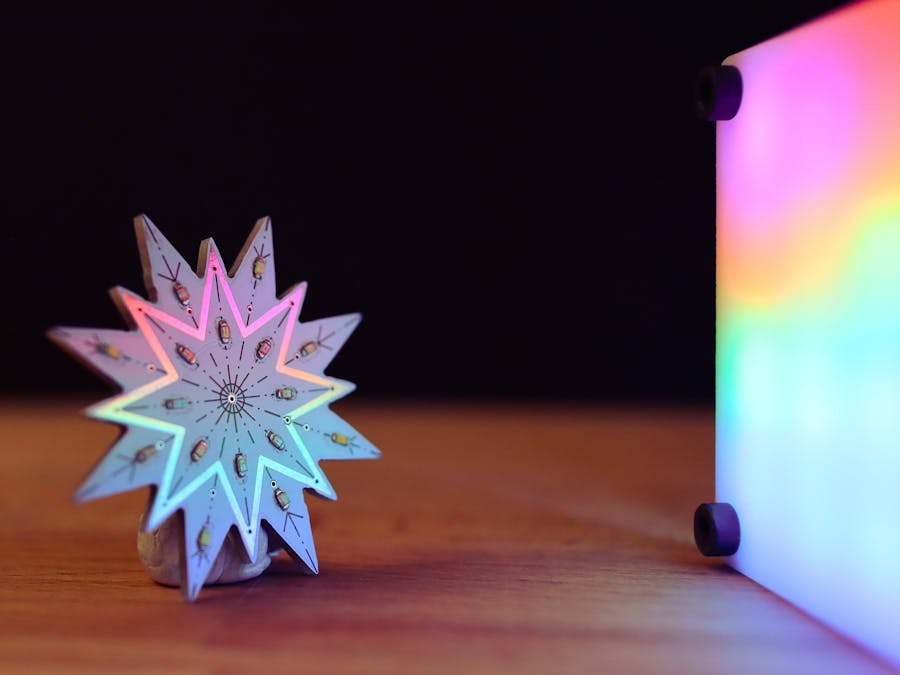One of the activities I really enjoy while working on a new project is documenting it. I love getting creative while taking pictures of the process and of the final products. A thing that has been really handy in this process is an adjustable studio light, which I use to add a bit of colour to the background (that's why most of the pictures in these tutorials are purple hehe).
PicoLight is a smaller version of a classic studio light that is useful for playing with colours in low-light shots or for coloured shadows photography.
PicoLight consists of two PCBs and a white acrylic panel (which is great for diffusing the light) sandwiched together. One of the PCBs is a 4x4 Neopixel Matrix with a Raspberry Pi Pico on the back and a rotary encoder with push-button. The encoder is used for adjusting the colour and the intensity of the light.
The other PCB is a LiPo battery shield which includes a charging circuit and a power switch. PicoLight can also be powered directly from the USB, without using this shield.
Here are all the parts:
The Neopixel Matrix PCB is 52x52 mm with M3 slots for the standoffs meant to hold everything together. I've designed them in Eagle CAD using the SVG to Eagle converter by Gordon Williams to import custom images to the board.
I first tried to solder the WS2812B LEDs using a reflow oven, but the temperature was too high so I've burned them :(. On my second attempt, I've used Miniware's Mini Hot Plate, which worked much better.
The battery shield includes a charging circuit based on the MCP73831T IC and I've used it with a 620 mAh LiPo battery. This shield plugs into the Neopixel matrix through a 2.54mm pitch pin header.
PicoLight was programmed in CircuitPython using Thonny, as suggested in this Adafruit tutorial. The push-button is used to switch between the three functioning modes:
- adjusting the intensity
- adjusting the colour (looping through all available colours)
- rainbow cycle mode
The values of the intensity and of the colour are stored in the data.txt file so the settings are kept even after PicoLight is rebooted.
I've played a bit with different objects and here are some results:
⚡Contact us!
⚡Check out our other projects as well!


















Comments
Please log in or sign up to comment.